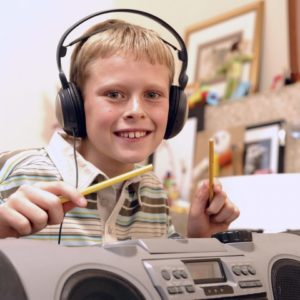
It’s easy to underestimate a room filled with toddlers tapping tambourines and swaying to a simple beat. But what may look like a joyful burst of chaos is often a foundation being laid, one note at a time, for something far more critical than rhythm. For parents and educators seeking every advantage to strengthen literacy skills in children, music isn’t just a side dish. It’s a powerful ally that has long been underutilized in classrooms and living rooms alike.
The Rhythm of Language
Children process language with the same neural circuits that handle music. When they clap to syllables or chant rhyming words, they’re not just engaging in play. They’re also learning how language flows, where sentences pause, and how sounds break apart and come together again. This rhythmic awareness is essential for decoding words on a page, especially in early readers who still rely on sound structures to make sense of print.
Memory in Melody
Ask anyone to recite a phone number from memory and they might stumble. Ask them to sing a childhood jingle and they’ll probably hit every note. Music leverages the brain’s pattern-recognition systems, helping kids remember words, sequences, and meanings without conscious effort. Songs about the alphabet, days of the week, or storytelling structures embed themselves into memory more deeply than rote repetition ever could.
Lyrics Are Literature
The words in children’s songs can serve as their first exposure to poetry. They contain metaphors, narrative arcs, and character development, often compacted into a minute-long tune. When educators incorporate song lyrics into lessons, they’re introducing literary devices in an accessible, engaging format. Children learn how language can evoke emotions, tell stories, and create vivid images long before they can articulate it academically.
Building Confidence Through Expression
Singing, whether solo or in a group, allows children to express themselves without the pressure of “getting it right” in the way traditional reading often demands. When kids sing aloud, they practice pronunciation, pacing, and intonation in a low-stakes setting. That builds confidence, especially for reluctant readers or those facing speech and language challenges. Over time, their comfort with oral language can lead to greater willingness to engage with written texts.
Creating a Multisensory Experience
Children don’t learn best by just sitting still and listening. They thrive when learning is tactile, visual, and auditory all at once. Music blends all of these into one experience. Whether they’re tapping a drum, tracing lyrics on a screen, or dancing to a beat while singing rhymes, kids are engaging their whole bodies and minds. This multisensory involvement helps anchor literacy concepts in the brain in ways a worksheet simply can’t replicate.
Culture, Connection, and Context
Music also opens doors to stories and traditions from around the world, giving children cultural context that can deepen comprehension. Songs in different languages, folk melodies from ancestral homelands, and spirituals from shared histories all bring layers of meaning to a child’s understanding of narrative and voice. By hearing how stories are told musically in other places, children grow more empathetic, more curious, and more fluent in the language of human experience.
From Song to Story
The link between music and storytelling runs deep. As children internalize patterns in songs—repetition, build-up, and resolution—they start to anticipate similar structures in books. They learn that stories, like songs, have a beginning, middle, and end. This kind of narrative mapping makes it easier to understand plot, identify main ideas, and predict outcomes when they read. The familiarity of musical storytelling becomes a bridge to literary comprehension.
Work Together as a Family
It can be difficult to find the time to work in learning-based activities at home, but studies have shown that when kids and parents read or create music together, they’re far more likely to stick with it–and enjoy it. Having a plan of attack will ensure your children have quality time with you, and you won’t feel as much pressure whether you’re helping them learn music and reading or being available for bedtime each night. Even the busiest schedules hold pockets of potential—five minutes while dinner simmers, ten during the car ride, a half-hour before bed—all of which can become moments of presence rather than just passing.
Music activates the brain in ways that prime children for the complexities of reading and writing, helping them grasp patterns, sounds, and stories more intuitively. If you want to support a child’s literacy journey, don’t just hand them a book—hand them a beat. You’ll be surprised how quickly the words start to dance.
Unlock your child’s reading potential with Red Cat Reading and join thousands of proud parents who have discovered the fun and fast way to learn with our engaging books, videos, and worksheets!
